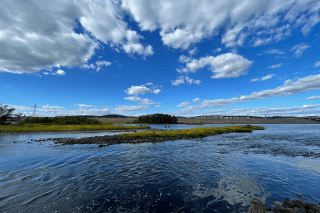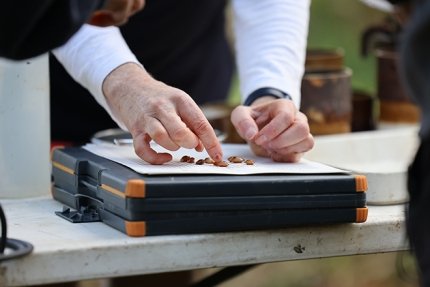West Branch Susquehanna River mussel restoration project shows progress
Lock Haven
Posted

A field event was recently held in Clinton County to highlight the progress made on the West Branch Susquehanna River mussel restoration project, funded in part by the National Fish and Wildlife Foundation’s Chesapeake WILD grant program.
Mussel silos were pulled from the river with staff from the Western Pennsylvania Conservancy to measure in real-time some of the progress. In attendance were representatives from multiple state and local agencies — many of whom were Lock Haven alumni — along with the Commonwealth University-Lock Haven’s ecology program.

Agencies included the Clinton County Conservation District, Pennsylvania Fish and Boat Commission, Pennsylvania Department of Environmental Protection, and Maryland Department of Natural Resources.
In 2023, the Western Pennsylvania Conservancy and its partners were awarded more than $410,000 in funding from the National Fish and Wildlife Foundation for a three-year project to reintroduce freshwater mussels to a 40-plus-mile stretch of the Susquehanna River's west branch.
"The long-term goal is to establish a self-sustaining freshwater mussel footprint in the West Branch where mussels presently do not occur," said Dan Spooner, associate professor of biology. "Native freshwater mussels have an interesting life-history strategy that requires their larvae, known as glochidia, to live on the gills of host fish. After incubating for a period of time, the juvenile mussels settle off the gills into the sediment."
Spooner added the project involves the restoration of two different mussel species.
"Project partners collect gravid females in the wild, then extract and introduce the larvae to their host fish," Spooner said. "Once juvenile Lampmussels settle from their host (largemouth bass), they're raised in a mussel hatchery to be later released in the wild. "Once extracted from gravid females, Elliptio larvae are quickly introduced to American eel elvers sourced from below the Conowingo Dam. The eels are then released to the restoration sites in the wild, where juvenile mussels will later settle into the substrate."
Additionally, the group saw during the field event the benefits of a stream restoration project completed this summer on the Long Spring property that was funded by the Pennsylvania Department of Environmental Protection’s Growing Greener grant program.
Lock Haven Wet Lab
The group then toured Lock Haven’s on-campus newly laid out wet lab, led by Dan Spooner, associate professor of biology, showcasing where the Eastern Elliptio/American Eel infestations were conducted over the past two years.
Susquehanna Broodstock Collection
To cap the day, the group traveled to Williamsport to collect broodstock from the West Branch Susquehanna River with staff from the Maryland Department of Natural Resources Joseph Manning Hatchery for propagation efforts in 2026.






